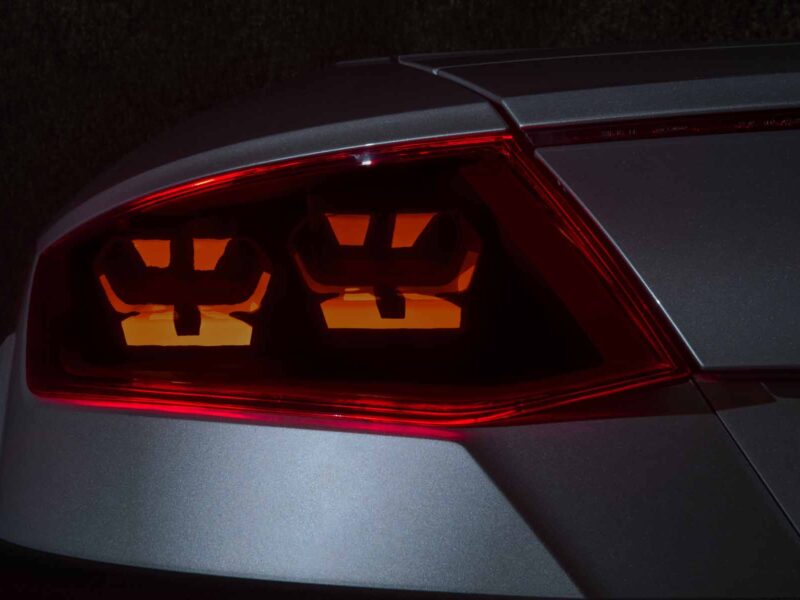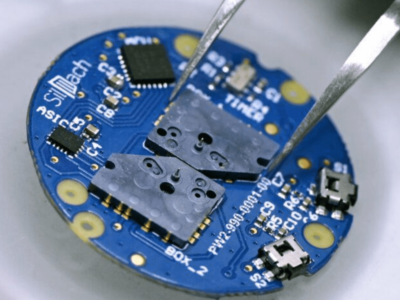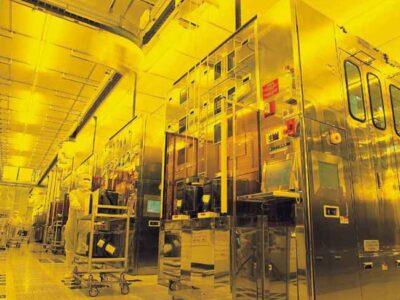
Flexible OLED in the starting blocks for automotive lighting
“Progress in OLED technology is advancing at rapid pace”, says Marc Luennemann, head of OLED at Osram. “With the successful completion of the project the partners demonstrated impressively that we can expect flexible OLEDs to be ready for series production in only a few years’ time – above all for automotive lighting.”
In contrast to point light sources such as LEDs, organic light emitting diodes, or OLEDs are flat light sources. Their light is therefore very homogeneous and does not need any reflectors, light guides or similar optics – this makes OLED light sources efficient, extremely lightweight and very flat. OLED enables light sources to be designed in any shape and mounted on flexible carriers.
As a highlight of the R2D2 research project a rear light prototype was unveiled at CES 2016 which was jointly developed by Audi, Hella and Osram OLED. Flexible OLEDs from Osram were shaped into three-dimensional modules by Hella and integrated in rear lights in accordance with a design produced by Audi. The partners ensured that the light emitted by the flexible OLED complies with the ECE standards for brightness and light color. The 3D unit does not need any additional optics or reflectors for the light to be easily seen from any viewing angle. The 3D OLED gives car manufacturers unseen freedom of design. Thanks to the homogeneity of the light-emitting surface and the precision of the design, new approaches can be taken with the development of this light source.
While flexible OLED technology is the innovation for the day after tomorrow, the first mass produced cars with ultra low-profile but rigid glass-based OLEDs are appearing on the market now. Various concept cars had been presented, notably the Audi e-tron quattro concept at IAA 2015 and a tail light at CES 2016 in Las Vegas.
The R2D2 project consortium covers the entire value added chain including material research, mechanical engineering, component technology and application studies for future products. The work is based on, among other things, the globally recognized results of the BMBF- sponsored R2Flex, So-Light and TOPAS2012 projects for organic electronics. The direct involvement of OLED lighting manufacturer Osram OLED and end users of the light sources like Audi AG and Hella supports a rapid and extensive evaluation of the project results. Partners in the consortium are Fraunhofer FEP, Audi, Diehl Aerospace GmbH, Hella KGaA Hueck & Co., Novaled, Osram OLED GmbH and Von Ardenne GmbH. The research project has been co-founded by the German federal research ministry BMBF.
Related articles:
OLED exterior lighting soon in series vehicles, Osram says
BMW’s fastest production road car premieres OLED technology
 If you enjoyed this article, you will like the following ones: don't miss them by subscribing to :
eeNews on Google News
If you enjoyed this article, you will like the following ones: don't miss them by subscribing to :
eeNews on Google News




